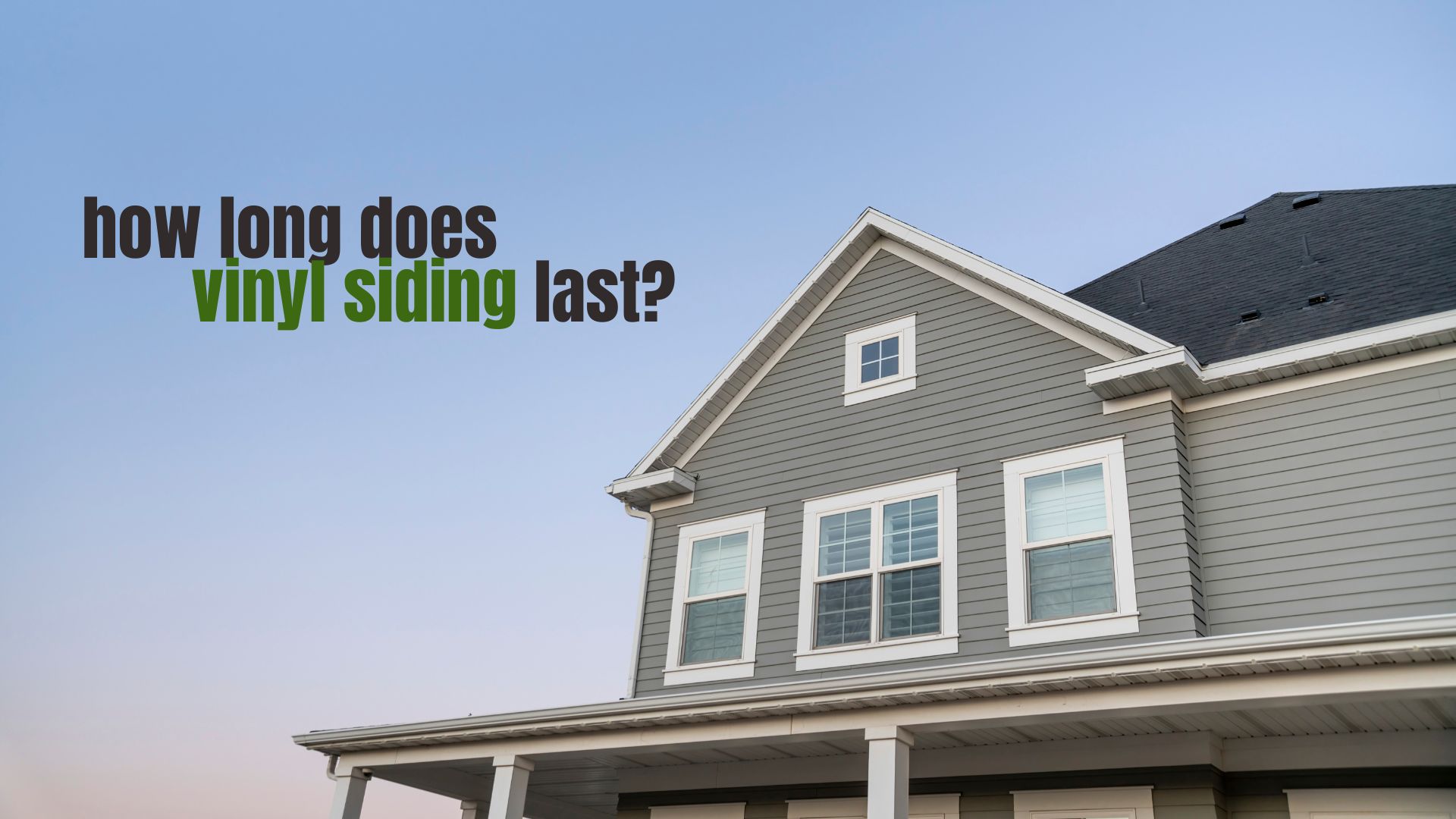Homeowners commonly choose vinyl siding to decorate their homes, but it's time to decide if it is your best option. Vinyl is available in many colors and styles, and is a highly hardy material. So, is this common siding choice all that, and how long does it last?
Vinyl siding has a lifespan of 30 to 60 years with proper maintenance. To keep vinyl lasting for decades, you should clean it every six months, inspect for faults seasonally, and repair it when necessary. Vinyl is one of the most robust options and extremely easy to look after.
If you'd like to find the perfect siding choice, vinyl is a sensible consideration. Once you know the lifespan, how to maintain it, and weigh the pros and cons, you can make an informed choice for your home makeover.
Vinyl Siding Lifespan

Vinyl is a common exterior cladding material for homes and buildings known to be low-maintenance, durable, and available in a wide range of colors and styles. The material is made from pigmented polyvinyl chloride (PVC), a plastic resin. Vinyl siding also has UV stabilizers, and some options have insulated backing.
Thanks to its plastic nature and UV protection, vinyl is durable enough to survive the elements without rotting, becoming infested, or losing color. Rain or sunshine, this siding material can last up to 60 years before a replacement is needed!
The main benefit of choosing vinyl is that it takes little effort to look after and never requires you to repaint or add UV protection. However, a little care goes a long way to ensure durability through the years.
How to Maintain Vinyl Siding
Looking after this siding option is as easy as 1,2,3, so we've broken it down into four basic steps. If you follow these homeowner guidelines, your exterior will have a long, happy life. You'll be surprised at how easy it is to care for vinyl!
Consider Quality
Splurging a few extra dollars on quality cladding makes the most significant difference in lifespan. Cheaper options may seem tempting, but you should think of costs in the long run. It could mean a halved lifespan of 30 years!
More expensive vinyl siding often comes with impressive warranties, which reflects the manufacturer's confidence in the quality.
Cheaper vinyl siding is made from lower-quality materials, which could drastically affect its durability and resistance to the elements. High-quality options often contain additives and UV stabilizers that enhance longevity far more than you expect. Better quality means it is less likely to discolor from UV damage.
Clean and Clear your Siding Regularly
Cleaning is central to vinyl maintenance and rarely needs more than that! The more time passes, the more dirt, dust, and mildew accumulate, so regular cleaning keeps everything in check and looking fabulous. It would help to wash your siding at least once a year during spring or fall.
High humidity and coastal areas require more frequent cleaning because you'd be more prone to mold and mildew - twice a year will do.
If you have nearby trees and bushes, you should seasonally clean off subsequent leaves, pollen, sap, bird droppings, and insects. You can also trim overhanging branches to prevent debris from accumulating. Make sure to clear gutters and downpipes twice a year, too!
How To Clean Vinyl Siding:
Step 1. Rinse off loose dirt with a hose.
Step 2. Fill a bucket with a mild detergent or vinyl cleaner and gently scrub off dirt, mold, and mildew with a soft bristle brush. Avoid harsh chemicals and abrasive cleaners as it could cause damage.
Step 3. Rinse off all soap and residue with your hose thoroughly.
Should You Power Wash Vinyl Siding?
The good news is that you can pressure wash it if heavy mold or grime takes too much effort to clean manually.
Prevent Mold and Mildew
If you'd like to clean less frequently, you can treat your siding with vinegar to prevent growth. To do so, apply a 70/30 vinegar-water solution to problem areas and leave it for 10 minutes, then wash it off with a hose.
Inspect and Repair as Needed
To ensure durability, regularly inspect the caulking and seals around windows, doors, and other openings. If there are any gaps, reseal them to prevent water infiltration. You should also replace any damaged siding panels.
Inspecting your home a few weeks after construction, annually, and after extreme weather conditions like storms would be best.
Vinyl Siding Pros and Cons
Glancing over the benefits and negatives is a surefire way to confirm if this cladding option is the best for you.
Pros of vinyl siding:
Cons of vinyl siding:
Final Thoughts
As a homeowner, an affordable, longstanding siding option that lasts 60 years is a dream! As long as you choose quality over price, clean your vinyl siding regularly, and check that everything is sealed correctly, you should have no problems. Hopefully, the pros outweigh the cons to enjoy this cheapest, most durable siding option. (Related article: Vinyl Siding Cost And Consumer Guide)

